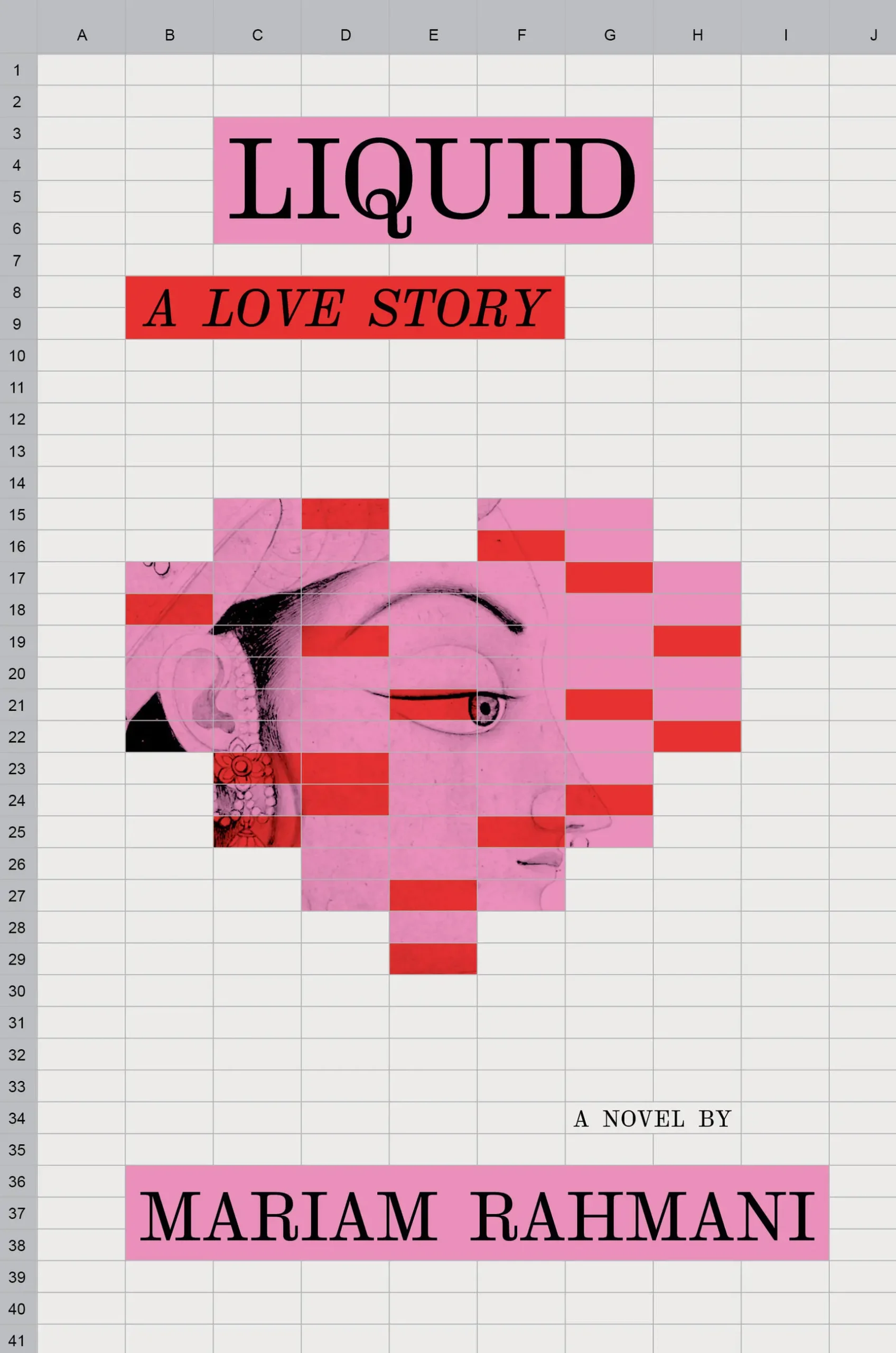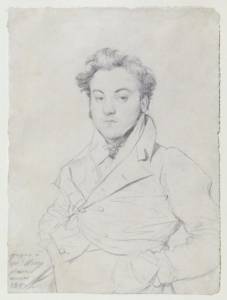 Portrait of Charles-Désiré Norry (1796-1818), 1817
Portrait of Charles-Désiré Norry (1796-1818), 1817
Graphite
Signed, inscribed, and dated at lower left, Ingres à Mr. Norry / Pere. / rome / 1817
Purchased as the gift of Mr. and Mrs. Claus von Bülow, 1977
Photography by Graham Haber, 2011
From September 9 to November 27, 2011, The Morgan Library & Museum presents seventeen exquisite drawings and some letters by French master Jean-Auguste-Dominique Ingres. In this interview, editor Jennifer Acker talks with curator Esther Bell about these drawings and the artist’s refined sense of place.
Jean-Auguste-Dominique Ingres (1780-1867) was arguably the last great champion of the French classical tradition. His productive career spanned one of the most tumultuous times in France’s long history: from monarchy, to Revolution, to Republic, and back again. He was born in Montauban, not far from Toulouse, nine years before the storming of the Bastille. Ingres studied with Jacques-Louis David in 1797, he was a pensionnaire at the Villa Medici in Rome (after winning the Grand Prix de Rome with his The Ambassadors of Agamemnon) from 1807-1810, and he served as the institution’s director from 1835-1840. After returning to Paris, he ran one of the most preeminent studios until his death in 1867. Our ability to understand his extraordinary impact, and the confidence with which we can call him one of the greatest painters and draftsmen of the modern age, can be marked by the profound influence that his subjects and styles had on his contemporaries and successors, such as Degas, Picasso, and even Cindy Sherman.
JA: Where and how did Ingres’s career begin?
EB: Ingres once told a reporter: “I was raised on red chalk.” His “career” began when he was quite young and still living in Montauban, a commercial center on the Tarn River near Toulouse. He was one of seven children, born to Anne, née Moulet (1758-1817), the daughter of a wigmaker. His father, Jean-Marie-Joseph Ingres (1755-1814), a decorative artist, enrolled his son in the Académie royale de peinture, sculpture et architecture in Toulouse when he was eleven years old.
Ingres was born in 1780 and lived to be 87. What are some of the major
changes that occurred in the world around him during his lifetime that
he documents in his drawing and letters on display in this exhibit?
Ingres lived through one of the most turbulent periods in the history of France. When he was thirteen years old, Louis XVI died at the guillotine. During his lifetime France went from monarchy to republic to empire to constitutional monarchy and back again. He and his contemporaries witnessed the creation of a national art museum at the Louvre (1793), the operations of the first French railway system (1832), and the invention of photography (ca. 1822). While Ingres does not directly respond to any of these events in the works on view, they collectively provide part of the backdrop to his professional trajectory.
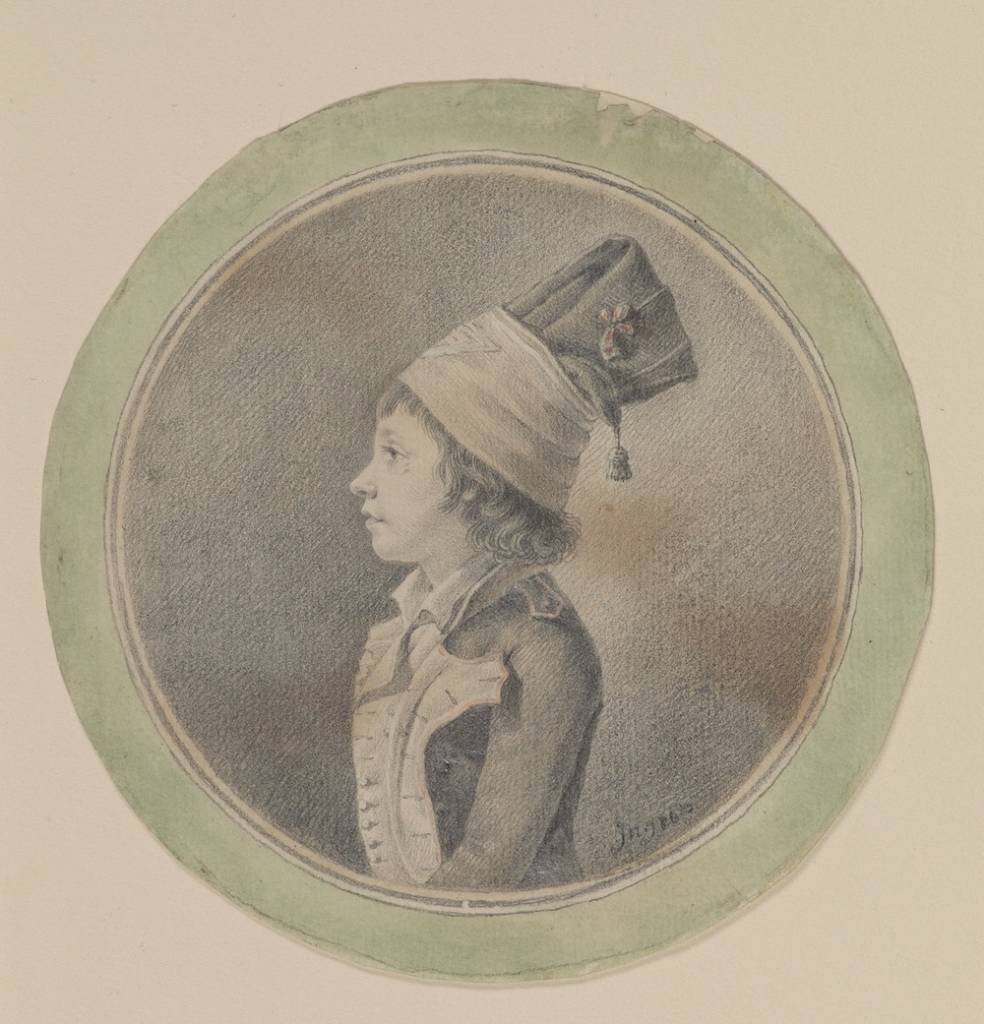 Portrait of a Young Boy, ca. 1793-94
Portrait of a Young Boy, ca. 1793-94
Graphite, with red and green watercolor
Signed in graphite at lower right, Ingres
Purchased on the Sunny Crawford von Bülow Fund, 1982
Photography by Graham Haber, 2011
Describe that marvelous head piece and jacket in the Portrait of Young
Boy (1793-94). Who is this boy and what is he wearing? How did Ingres come
to draw this portrait? Why is the format circular?
Ingres executed this drawing when he was a student at the Académie in Toulouse, and we suspect he was thirteen or fourteen years old. The child’s outlandish hat and his suit with its buttoned lapel probably imitate a military costume. It was common for civilians who supported the Revolutionary cause to wear such costumes to show their solidarity. (Of course this boy would have been too young to actually participate in any sort of uprising). These types of medallion drawings of sitters featured in profile were popularized in the eighteenth century by artists such as Charles-Nicolas Cochin II (1715-1790). During the Revolution, however, military heroes were also depicted in this format, and engravings after these images were disseminated and collected by those who supported their efforts. In our concurrent exhibition at the Morgan, David, Delacroix, and Revolutionary France: French Drawings from the Louvre, we see a drawing in a similar format from ca. 1795 by Jacques-Louis David of a fellow Jacobin (an image David made while in the Quatre-Nations prison).
Ingres was a pensionnaire at the French Academy in Rome. What does
that mean? What did Ingres think of Rome and of Italy?
Ingres was sent by the French state to the Académie in Rome, after winning theGrand Prix de peinture, to continue his artistic training. After the advent of a royal academy in Paris in 1648, artists were encouraged to travel to Rome to study old masters such as Raphael and Michelangelo, as well as ancient Greek and Roman sculptures). Life as a pensionnaire, or student/boarder, at the Villa Medici was structured by classes in which the artists made drawings after models and expeditions to major monuments such as the Sistine Chapel and Tivoli.
When Ingres first arrived in Rome, he was incredibly homesick and missed his fiancée Julie Forestier. In a letter dated 19 October 1806 (a week after he arrived), he writes: “I would return to Paris, only for you my kind friend. I have read a hundred times this lovely writing in pencil; I shift continually from the letter to the portrait. I seem to see you, I speak to you, but, alas, you do not answer; at my home there is only a sad silence interrupted by the sound of a bell or rain falling in torrents, accompanied by a thunder that seems to foreshadow the destruction of the entire world. I go to bed at nine o’clock at night and until six o’clock when I get up, I do not sleep, I roll over in my bed, I cry, I think of you constantly.”
In April of 1807, in a letter to Monsieur Forestier, the father of his beloved Julie, Ingres writes: “All the Easter celebrations have been held in rainy and cold weather, but for the last two days the weather is beautiful, and judging by some rays of the sun, the summer will be terribly hot. Anyway, I am like the ant, I earn my living by working at home without running about.”
About the Easter celebrations themselves, Ingres writes: “I will tell you however in regard to pleasures that I have spent Holy Week in the Sistine Chapel and the Easter holidays in St. Peter, which is like the temple of Solomon. The Sistine Chapel is dedicated solely to the Holy Week and to the conclave. It is enriched by the sublime masterpiece of Michelangelo, The Last Judgment, and he also painted the ceiling, and the rest is covered with beautiful paintings by Perugino and other great masters of the Renaissance. Nothing is more impressive than all these ceremonies, than the Pope, this good and venerable man presiding, and all the cardinals. I cannot tell you enough how it is beautiful, rich and simple all at once, but what I had never heard in my life was music like the Miserere, which is sung on three consecutive days, or rather, that is exhaled in celestial and divine songs that penetrate the soul and moisten the eyes.”
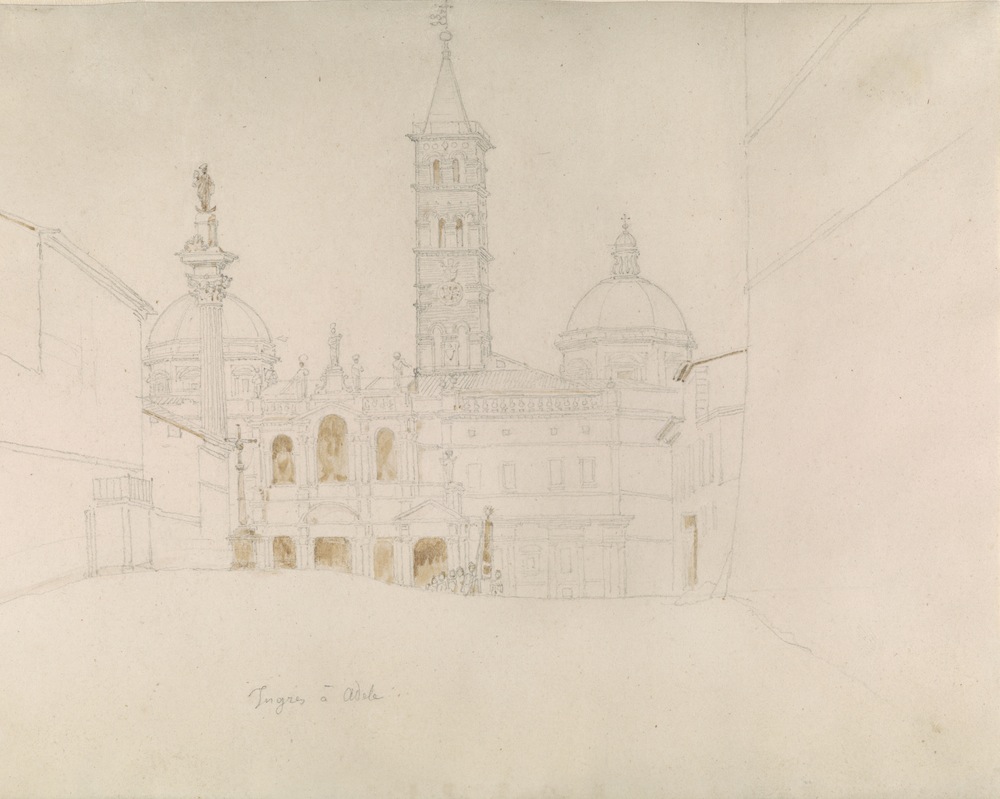 View of Santa Maria Maggiore, ca. 1813-14
View of Santa Maria Maggiore, ca. 1813-14
Graphite, pen and brown ink, brown wash
Signed and inscribed below at center, Ingres à Adele
Thaw Collection, The Morgan Library & Museum
Photography by Graham Haber, 2011
Was it during this time in Rome that Ingres drew View of Santa Maria
Maggiore (1813-14)? Where is this cathedral? Did Ingres draw many
buildings? Some features of the building are drawn with more detail
than others; is there an interesting explanation for that?
After completing his tenure as a pensionnaire at the Villa Medici in 1810, Ingres remained in Rome to paint and draw portraits of French occupation officials and their families in his studio on the via Gregoriana. During this period Ingres explored and sketched local monuments such as St. Peter’s, the Villa Borghese, San Gaetano, the Palazzo Barberini, and Santa Maria Maggiore (a Papal basilica that stands on the site of a temple to the goddess Cybele). This drawing was likely executed in a sketchbook that he carried with him to the Esquiline Hill. He seems most concerned with rendering the façade with a comparable exactitude to that which we see in his many drawn portraits. The activity taking place within and around the basilica, such as the group processing from the entranceway, which is only summarily drawn, is entirely secondary to his desire to capture the imposing physicality and textures of the building and its materials.
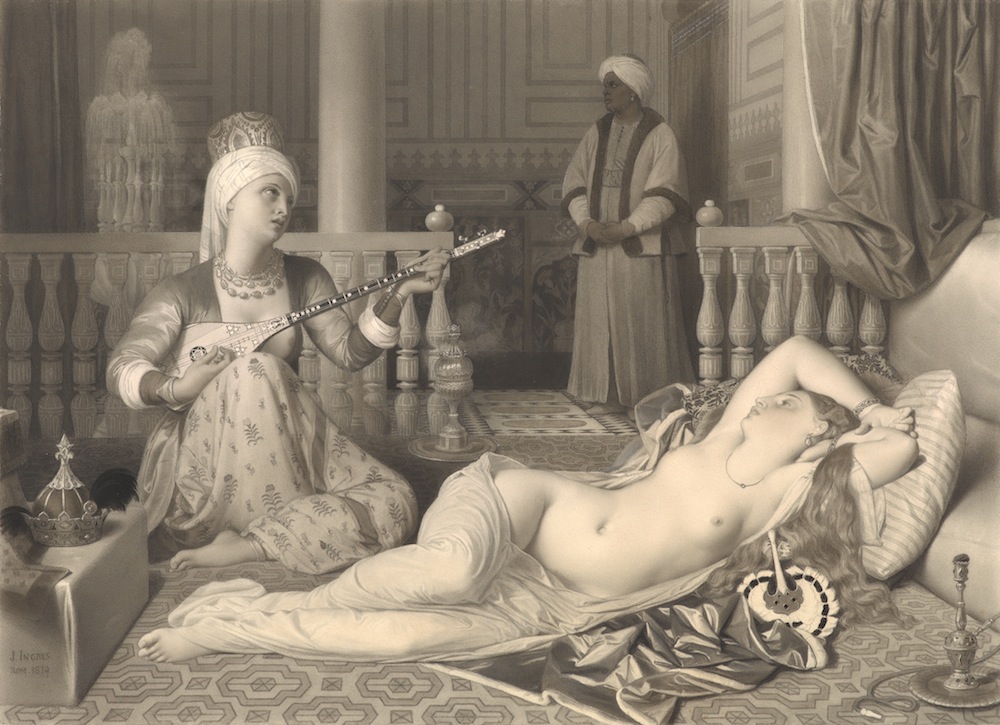 Odalisque and Slave, 1839
Odalisque and Slave, 1839
Graphite, black and white chalk, gray and brown wash
Signed, inscribed, and dated at lower left, J. Ingres / Rom. 1839
Thaw Collection, The Morgan Library & Museum
Photography by Graham Haber, 2011
When I saw Odalisque and Slave (1839) in the conservation room at
The Morgan I wanted to touch it, absorb it not only with my eyes but with
my fingertips. How does Ingres achieve the luxurious appearance of the
various materials?
This drawing is an excellent example of Ingres’s mastery of the available media—graphite, pen and ink, watercolor, and chalk. He is plainly exploring the textures and viscosity of the various materials. For instance, he uses white chalk for the fan at the lower right, because layers of white chalk would have a “fluffy” appearance — an appropriate attribute for the fan’s feathers. For the more precisely drawn details of the composition he uses his characteristic graphite and also a sharpened piece of black chalk.
What other aspects of this work make it a masterpiece?
This image is an essay on the senses: we can smell the tobacco wafting through the air; we can hear the laconic music from the slave’s instrument and the water cascading from the fountain; we can feel the cool mosaic tile against our bare feet; and, of course, we are faced with a visual overload of textures (the embroidered silk of the slave’s costume or the soft flesh of the naked odalisque lying in the foreground). “Taste” is a bit more difficult. . .but I like to imagine that the sultan (whom we do not see) is enjoying a lavish feast of rich delicacies.
What does Odalisque tell us about the exotic and erotic imagination
of nineteenth-century Paris? Who else was drawing and painting similar
Arabian scenes at the time? Where did the details of the appearance of the
interiors and dress (clothing and accessories) come from?
The East had been an object of fascination long before the nineteenth century. In the eighteenth century, artists such as François Boucher, Carle Vanloo, Jean-Étienne Liotard, and many others had popularized the genre of turquerie—catering to art collectors who fantasized about the adventures and luxuries of a far away land. Engravings after Turkish costumes were also widely circulated and collected, and wealthy men and women would often dress in Turkish-inspired costumes. (The artist, Liotard famously wore a “Turkish beard.”) Ingres would have certainly known these compositions from his training in Paris, and also from engravings after their paintings. Ingres’s contemporaries such as Eugène Delacroix also portrayed exotic subjects; Delacroix visited Morocco in 1832—an experience that inspired later Orientalist compositions.
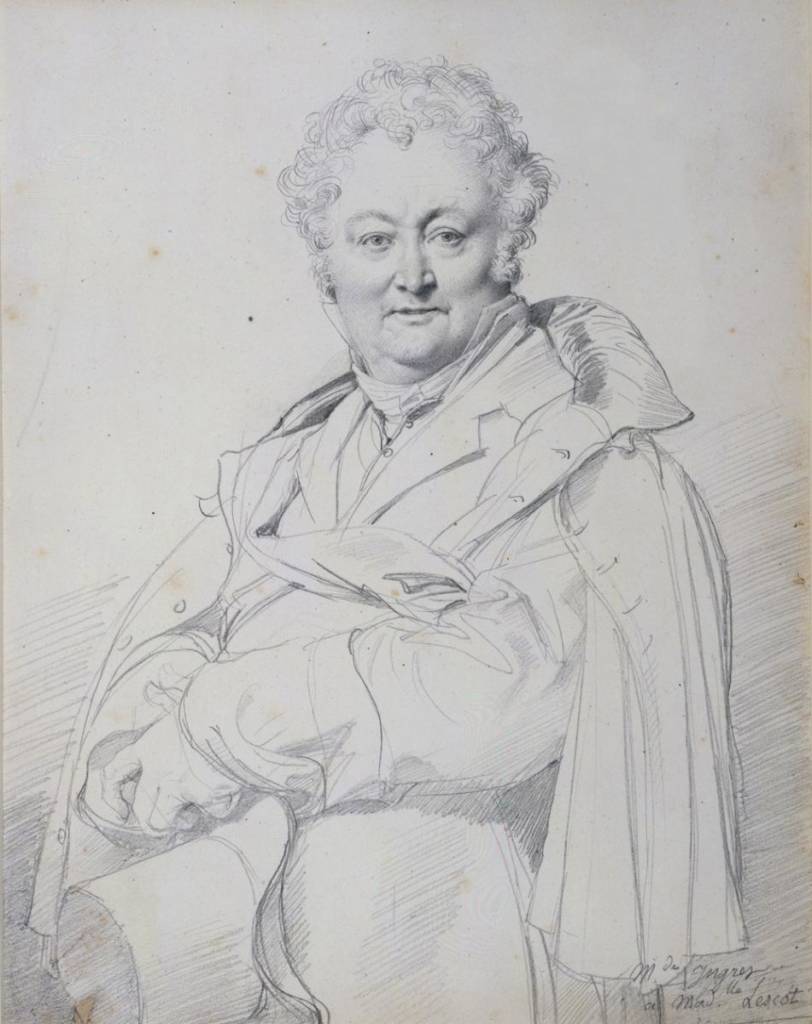 Portrait of Guillaume Guillon Lethière (1760-1832), 1815
Portrait of Guillaume Guillon Lethière (1760-1832), 1815
Graphite Inscribed at lower right, M. de Ingres / a Madlle Lescot
Bequest of Therese Kuhn Straus in memory of her husband, Herbert N. Straus
Photography by Graham Haber, 2011
Do you have a favorite from the drawings on display?
My personal favorite is the Portrait of Guillaume Lethière. I love the subtle details in Lethière’s expression, such as the tight smile that reveals his upper layer of teeth. I also enjoy seeing where Ingres has made adjustments to the initial composition, such as moving the placement of the figure’s left hand or the way his coat collar lies upon his body at the upper left. Lethière himself was a fascinating figure—he was an excellent painter and draftsman (a rival of David). And, he was born in Sainte-Anne, Guadeloupe—his father was a white government bureaucrat and his mother was a freed black slave. The fact that he rose to power within the strictures of the French academic system, eventually becoming Director of the French Academy in Rome when Ingres was a pensionnaire, is exceptional.
Which Ingres pieces from the Louvre were you most excited to display
for the concurrently running show “David, Delacroix, and Revolutionary
France: Drawings from The Louvre”?
I was thrilled that we could show The Forestier Family, which is not only an early (and masterful) example of his group portraiture but which also provides a nice counterpoint for the two letters on view in Ingres at the Morgan. Scholars have also proposed that Ingres made a copy of Julie’s figure (which is now in the Institut Custodia, Paris), and he took this portrait with him to Rome. It is probably this image that he refers to in the Morgan letter: “I would return to Paris, only for you my kind friend. I have read [your letter] a hundred times. . I shift continually from the letter to the portrait. I seem to see you, I speak to you, but, alas, you do not answer.” Also, the Louvre’s two early studies for La Grande Odalisque (ca. 1813) provide a nice juxtaposition to the Morgan’s Odalisque and Slave—made more than two decades later. But, there is nothing better than the hefty Madame Bertin’s mustached upper lip (in the Portrait of Madame Bertin).
The Louvre is famously reticent to loan artwork–is that right? How
did these pieces come to be loaned to The Morgan?
In 1993, The Morgan sent more than one hundred and twenty French drawings to the Louvre for an exhibition entitled “French Master Drawings from the Pierpont Morgan Library.” “David, Delacroix, and Revolutionary France: French Drawings from the Louvre” was conceived as the reciprocal exhibition. It has been an enormous pleasure to collaborate with our colleagues in Paris, especially Louis-Antoine Prat, a renowned specialist (and collector) of nineteenth-century French drawings.
Was any drawing or letter in this exhibit, or any aspect of them, a surprise to you?
I was surprised and touched by the descriptive letters that Ingres wrote when he was a young student in Rome. I was particularly interested by his detailed descriptions of life at the Academy, his fellow students (who frequently misbehaved), and his impressions of the local monuments. I was also enraptured by his very personal descriptions of the history painter Jean-Benoît Suvée (1743-1807), who was the director when Ingres first arrived. He writes: “. . .in regard to this poor Mr. Suvée. . he was a perfectly decent gentleman and his small character failings (like great touchiness and meticulousness) cannot be the ruin of him. But he was not, and should not have been Director of such independent [students]. The first ones especially, made life miserable for him in the beginning through all kinds of provocations. . .It totally changed his character, which became extremely irritable. But he shouted when he should not have and said nothing when he should have. You can see that he lacked judgment. . ..” (Ingres then goes on to describe Suvée’s sudden death, gossiping that he did not want to tell his wife that he was not feeling well because he did not want to worry her). Such a review of Suvée’s pedagogical failings are even more interesting when one considers that Ingres would assume this very position (Director) in 1834.
What are three things about Ingres that most people don’t know?
When Ingres was a child, he was a singer and violinist.
When Ingres and his wife returned to Paris in 1841, a large banquet was held in his honor at the Salle Montesquieu. A chorus from the Opera performed works conducted by Hector Berlioz (who was one of more than 400 people in attendance).
A small reproduction of Ingres’s painted Oedipus and the Sphinx (of which the Morgan Library owns a preparatory drawing) was displayed by Sigmund Freud at the foot of his couch in his consulting room in Vienna.
For those interested in learning more about Ingres, do you have any further suggested reading?
There have been many publications and exhibitions about the artist, but for an overview of Ingres’s life and production I suggest Andrew Carrington Shelton’sIngres (2008). Two specialist studies that I find particularly interesting and useful are Susan L. Siegfried’s Ingres: Painting Reimagined (2009) and Andrew Carrington Shelton’s Ingres and his Critics (2005). A seminal catalogue raisonné of the drawn portraits was written by Hans Naef, Die Bildniszeichnungen von J-A-D Ingres (1977-80). I also invite readers to visit our online exhibition (featuring full translations of the letters and also an essay about the artist’s materials by conservator Morgan Adams) by visiting the Morgan’s website atwww.themorgan.org.


